Porsche 2008 Annual Report Download - page 221
Download and view the complete annual report
Please find page 221 of the 2008 Porsche annual report below. You can navigate through the pages in the report by either clicking on the pages listed below, or by using the keyword search tool below to find specific information within the annual report.-
 1
1 -
 2
2 -
 3
3 -
 4
4 -
 5
5 -
 6
6 -
 7
7 -
 8
8 -
 9
9 -
 10
10 -
 11
11 -
 12
12 -
 13
13 -
 14
14 -
 15
15 -
 16
16 -
 17
17 -
 18
18 -
 19
19 -
 20
20 -
 21
21 -
 22
22 -
 23
23 -
 24
24 -
 25
25 -
 26
26 -
 27
27 -
 28
28 -
 29
29 -
 30
30 -
 31
31 -
 32
32 -
 33
33 -
 34
34 -
 35
35 -
 36
36 -
 37
37 -
 38
38 -
 39
39 -
 40
40 -
 41
41 -
 42
42 -
 43
43 -
 44
44 -
 45
45 -
 46
46 -
 47
47 -
 48
48 -
 49
49 -
 50
50 -
 51
51 -
 52
52 -
 53
53 -
 54
54 -
 55
55 -
 56
56 -
 57
57 -
 58
58 -
 59
59 -
 60
60 -
 61
61 -
 62
62 -
 63
63 -
 64
64 -
 65
65 -
 66
66 -
 67
67 -
 68
68 -
 69
69 -
 70
70 -
 71
71 -
 72
72 -
 73
73 -
 74
74 -
 75
75 -
 76
76 -
 77
77 -
 78
78 -
 79
79 -
 80
80 -
 81
81 -
 82
82 -
 83
83 -
 84
84 -
 85
85 -
 86
86 -
 87
87 -
 88
88 -
 89
89 -
 90
90 -
 91
91 -
 92
92 -
 93
93 -
 94
94 -
 95
95 -
 96
96 -
 97
97 -
 98
98 -
 99
99 -
 100
100 -
 101
101 -
 102
102 -
 103
103 -
 104
104 -
 105
105 -
 106
106 -
 107
107 -
 108
108 -
 109
109 -
 110
110 -
 111
111 -
 112
112 -
 113
113 -
 114
114 -
 115
115 -
 116
116 -
 117
117 -
 118
118 -
 119
119 -
 120
120 -
 121
121 -
 122
122 -
 123
123 -
 124
124 -
 125
125 -
 126
126 -
 127
127 -
 128
128 -
 129
129 -
 130
130 -
 131
131 -
 132
132 -
 133
133 -
 134
134 -
 135
135 -
 136
136 -
 137
137 -
 138
138 -
 139
139 -
 140
140 -
 141
141 -
 142
142 -
 143
143 -
 144
144 -
 145
145 -
 146
146 -
 147
147 -
 148
148 -
 149
149 -
 150
150 -
 151
151 -
 152
152 -
 153
153 -
 154
154 -
 155
155 -
 156
156 -
 157
157 -
 158
158 -
 159
159 -
 160
160 -
 161
161 -
 162
162 -
 163
163 -
 164
164 -
 165
165 -
 166
166 -
 167
167 -
 168
168 -
 169
169 -
 170
170 -
 171
171 -
 172
172 -
 173
173 -
 174
174 -
 175
175 -
 176
176 -
 177
177 -
 178
178 -
 179
179 -
 180
180 -
 181
181 -
 182
182 -
 183
183 -
 184
184 -
 185
185 -
 186
186 -
 187
187 -
 188
188 -
 189
189 -
 190
190 -
 191
191 -
 192
192 -
 193
193 -
 194
194 -
 195
195 -
 196
196 -
 197
197 -
 198
198 -
 199
199 -
 200
200 -
 201
201 -
 202
202 -
 203
203 -
 204
204 -
 205
205 -
 206
206 -
 207
207 -
 208
208 -
 209
209 -
 210
210 -
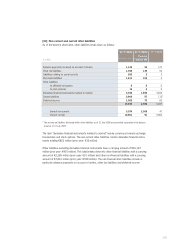 211
211 -
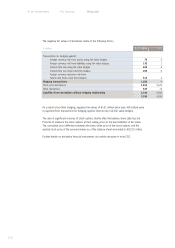 212
212 -
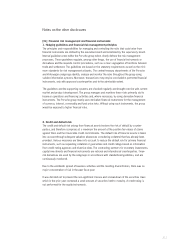 213
213 -
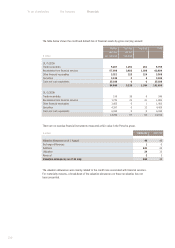 214
214 -
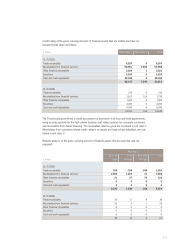 215
215 -
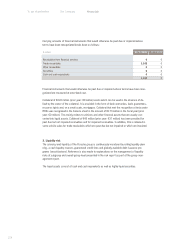 216
216 -
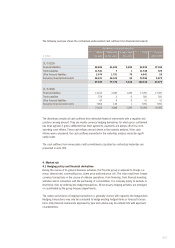 217
217 -
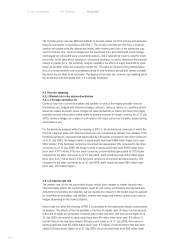 218
218 -
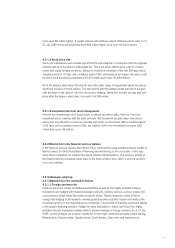 219
219 -
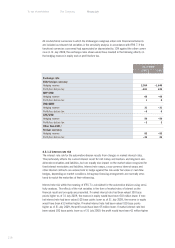 220
220 -
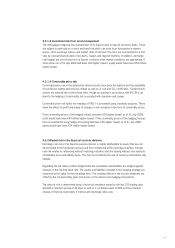 221
221 -
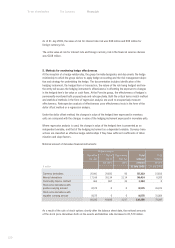 222
222 -
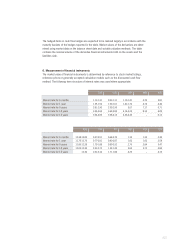 223
223 -
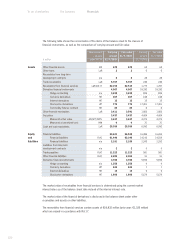 224
224 -
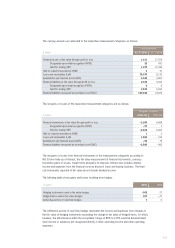 225
225 -
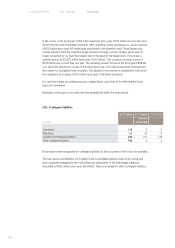 226
226 -
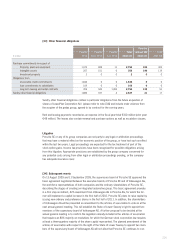 227
227 -
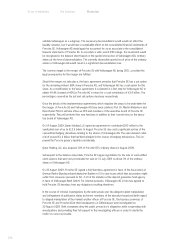 228
228 -
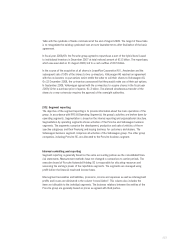 229
229 -
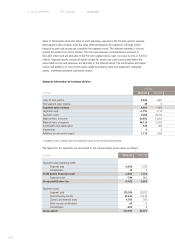 230
230 -
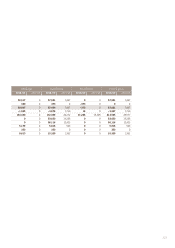 231
231 -
 232
232 -
 233
233 -
 234
234 -
 235
235 -
 236
236 -
 237
237 -
 238
238 -
 239
239 -
 240
240 -
 241
241 -
 242
242 -
 243
243 -
 244
244 -
 245
245 -
 246
246 -
 247
247 -
 248
248 -
 249
249 -
 250
250 -
 251
251 -
 252
252 -
 253
253 -
 254
254
 |
 |
219
4.3.1.3 Investment risk from asset management
The Volkswagen subgroup has invested part of its liquid assets in special securities funds. These
are subject in particular to a stock and bond risk which can arise from fluctuations in market
prices, stock exchange indices and market rates of interest. The risks are counteracted in a first
step by a broad diversification of products, issuers and regional markets. In addition, exchange
rate hedges are used in the form of futures contracts when market conditions are appropriate. If
stock prices as of 31 July 2009 had been 10% higher (lower), equity would have been €54 million
higher (lower).
4.3.1.4 Commodity price risk
Commodity price risk in the automotive division results from price fluctuations and the availability
of non-ferrous metals and precious metals as well as of coal and CO2 certificates. Forward trans-
actions are entered into to limit these risks. Hedge accounting in accordance with IAS 39 is ap-
plied to the hedging of commodity risk associated with aluminum and copper.
Commodity price risk within the meaning of IFRS 7 is presented using sensitivity analyses. These
show the effect on profit and equity of changes in risk variables in the form of commodity prices.
If the commodity prices of the hedged metals had been 10% higher (lower) as of 31 July 2009,
profit would have been €49 million higher (lower). If the commodity prices of the hedging transac-
tions accounted for using hedge accounting had been 10% higher (lower) as of 31 July 2009,
equity would have been €74 million higher (lower).
4.3.2 Market risk in the financial services divisions
Exchange rate risk in the financial services division is mainly attributable to assets that are not
denominated in the functional currency and from refinancing within operating activities. Interest
rate risk relates to refinancing without matching maturities and the varying interest rate elasticity
of individual asset and liability items. The risks are limited by the use of currency and interest rate
hedges.
Regarding the fair value portfolio hedge fixed-rate receivables and liabilities are hedged against
changes in the risk-free base rate. The assets and liabilities included in this hedging strategy are
measured at fair value for the remaining term. The resulting effects in the income statement are
offset by the corresponding gains and losses on the interest rate hedging instruments.
The value at risk is determined using a historical simulation based on the last 250 trading days
and with a retention period of 10 days as well as a confidence level of 99% and the potential
change in financial instruments if interest and exchange rates vary.
